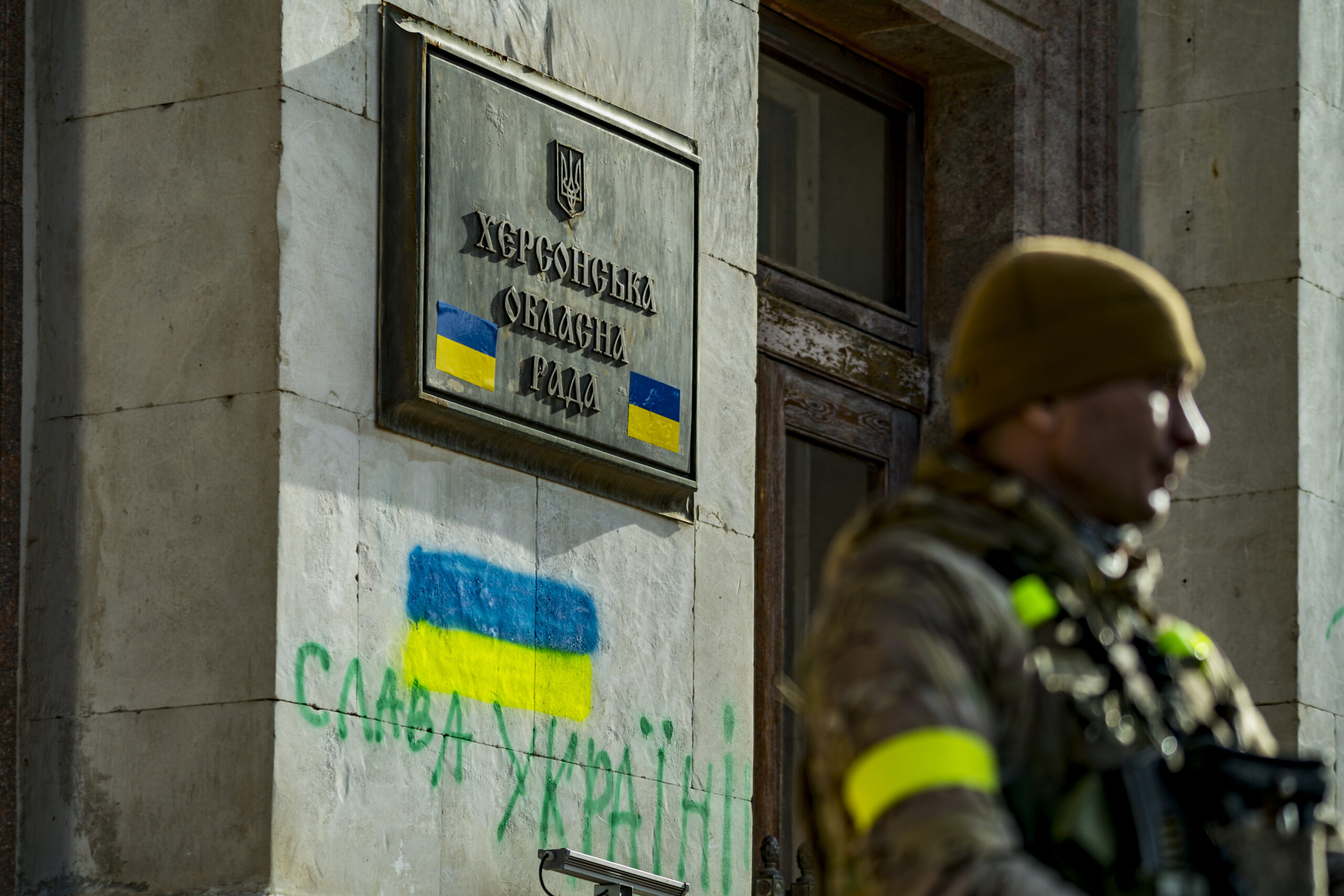In 2017, prompted by a 2015 trip across Ukraine, Rajan Menon and I published an article on historical buffer zones sandwiched between rival great powers. We found that Ukraine possessed none of the features that characterized buffer success stories. In fact, we worried that Ukraine had the makings of a quagmire that could embroil rival flanking powers—NATO and Russia—in a costly struggle, motivated by mutual security fears and entrapment by local clients in Ukraine.
Now, however, it might be possible and necessary to create a self-enforcing equilibrium of power there—a stalemate. Though this is not ideal for any actors, any other path is likely to be too costly and risky for all parties.
Buffer zone histories reveal several ingredients for success. For the buffer itself, success required favorable geography for self-defense, the social cohesion of citizens, political and administrative effectiveness of the state, an ability to impose some costs on an invading army, and a coherent strategy. For the rival major powers on the buffer’s flanks, favorable factors included a strong capacity for self-defense combined with a limited capacity to mount an offensive; a degree of compatibility of the flanking powers’ policies toward the buffer; and, in some cases, their participation in a formal agreement recognizing the buffer’s status.
Success cases such as Switzerland, post-1955 Austria, and Cold War Finland enjoyed many but not all of these conditions, and not all the same ones. Switzerland’s mountains, capable army, effective state, and strict neutrality created a self-enforcing equilibrium. The Austrian buffer relied on active, explicit help from outside powers to stabilize its economy, reconstitute its state, and recognize its neutrality. According to Günter Bischof, “no European nation benefited more from the Marshall Plan than Austria.” Indeed, it received nearly one billion dollars through the plan and half a billion in humanitarian aid. Finland’s tacit buffer status depended on its track record as having tough fighters, its neutrality in international affairs, and the lack of an incentive for Cold War rivals to incur the costs and risks of pushing for change.
In 2017 Ukraine looked like an unreliable buffer because of its unstable and corrupt politics, dysfunctional economy, open terrain, haphazard army, and uncertain patriotism. Moreover, it depended on its Russian foe for energy and showed a lack of commitment to reforming its state. But a reassessment of Ukraine’s prospects as a buffer between Russia and NATO is due. Since Russia’s February 2022 invasion, the Ukrainian people have displayed immense willingness to sacrifice for the nation—consolidating a unified national identity and forming a reconfigured, battle-tested army—despite uncertainty about improvements in governmental reform, lingering corruption, and ongoing scandals.
Conditions for an enduring military stalemate—let’s call it an equilibrium—are emerging in Ukraine. Despite talk on both sides of spring offensives, the artillery barrages and human-wave assaults of Russian mercenaries and poorly trained recruits have stalled against outnumbered Ukrainian defenders. Yet a near-term breakthrough for Ukraine remains elusive because of the sluggish delivery of more advanced armor and missiles from Ukraine’s NATO supporters and the slow pace of ammunition resupply on both sides.
The Biden administration’s policy—driven partly by limited supplies for the ground war but also a prudent concern to avoid Russian escalation—works as a stalemate machine, providing just enough military support to prevent any meaningful Russian advance, but not enough to allow a Ukrainian victory. Even if Ukraine could sever Russia’s newly conquered land bridge to Crimea, large Russian forces would remain entrenched in Donetsk and Luhansk, areas that have been cut off from Ukraine since 2014.
President Putin’s use of nuclear threats—from explicit threats to use battlefield nuclear weapons, to positioning of Russian artillery near the huge Zaporizhzhia nuclear power plant, to warnings about the dire consequences of hypothetical NATO support for Ukrainian conventional strikes inside Russia—has made NATO wary about increasing its level of military support to Ukraine. NATO has gradually increased the number, sophistication, and range of the offensive and defensive weapons systems to Ukraine to support a grinding reconquest of territory that it lost in Russia’s initial assaults. As long as NATO military aid remains within those parameters, Russian restraint will likely continue.
The logic of nuclear deterrence is different from the logic of conventional deterrence and warfighting. Nuclear deterrence does not hang on some numerical balance of arms, but on which side cares more about the outcome of the struggle. The more motivated side will try to create the shared risk that the use of nuclear weapons by both sides will escalate beyond control. That the Russians are willing to use the Zaporizhzhia reactor as a shield for their artillery is a credible signal of their potential to behave recklessly in that regard.
The stakes for both sides in this game of brinksmanship are high. Putin has staked his credibility on this reckless war of choice. The leaders of the NATO countries want to show that liberal democracy can face down authoritarian aggression and atrocities. Yet these stakes are not worth risking a large-scale nuclear war. Putin will not lose his job or his head if the war remains within the parameters of current NATO policy. And as long as the Russian army is bottled up east of the Dnipro River, Ukraine’s Western supporters need not sharply escalate aid provision.
More worrisome is how the conventional stalemate might be disrupted by broader geopolitical developments. In our 2017 historical survey, we found that buffers typically collapsed after great power rivalries overwhelmed the benefits of sustaining the buffer. Belgium was created as a buffer between France and other powers, but by 1914 the forces propelling Europe toward preventive war outweighed the drawbacks of violating Belgian neutrality. Thailand was a stable buffer until it found itself blocking Japan’s path to the Indonesian oil it needed for the coming war against the United States. China might be able to break the local stalemate in Ukraine if it decides to help its ally Russia win decisively. But China would seem to have a stronger incentive to help Russia avoid catastrophic defeat, not to overturn a stalemate. These wider geopolitical considerations would seem to reinforce the logic of frozen conflict.
An attractive feature of this self-enforcing equilibrium is that it arguably will not require an explicit agreement. This is good because it appears nearly impossible for Putin and Zelensky to talk to each other, let alone make concessions from their public statements about decisive victories.
How then to maintain this tacit equilibrium at a tolerable cost in blood and treasure? NATO countries must not flag in providing defenses against air attacks on civilian targets and strong suppressive fire against artillery barrages at populated parts of the front lines. These actions can be effective for defense but pose little risk of enabling a transition to an offensive into pre-2014 Russian lands. Enhancing the stalemate machine might eventually lead both sides to a sullen, frustrated passivity.
At that point, Ukraine could try to undertake a serious round of economic and legal reform, escaping dependency on Russia through a green energy plan in a stable zone west of the Dnipro. Even in a stalemate, Ukraine can be helped in the same way that Marshall aid stabilized Austria as an early Cold War buffer. The West can offer a path toward EU status but not NATO membership. The latter would only provoke Russia and undermine the conditionality of Western aid that might prevent Ukrainian backsliding and reckless entrapment of its allies.








